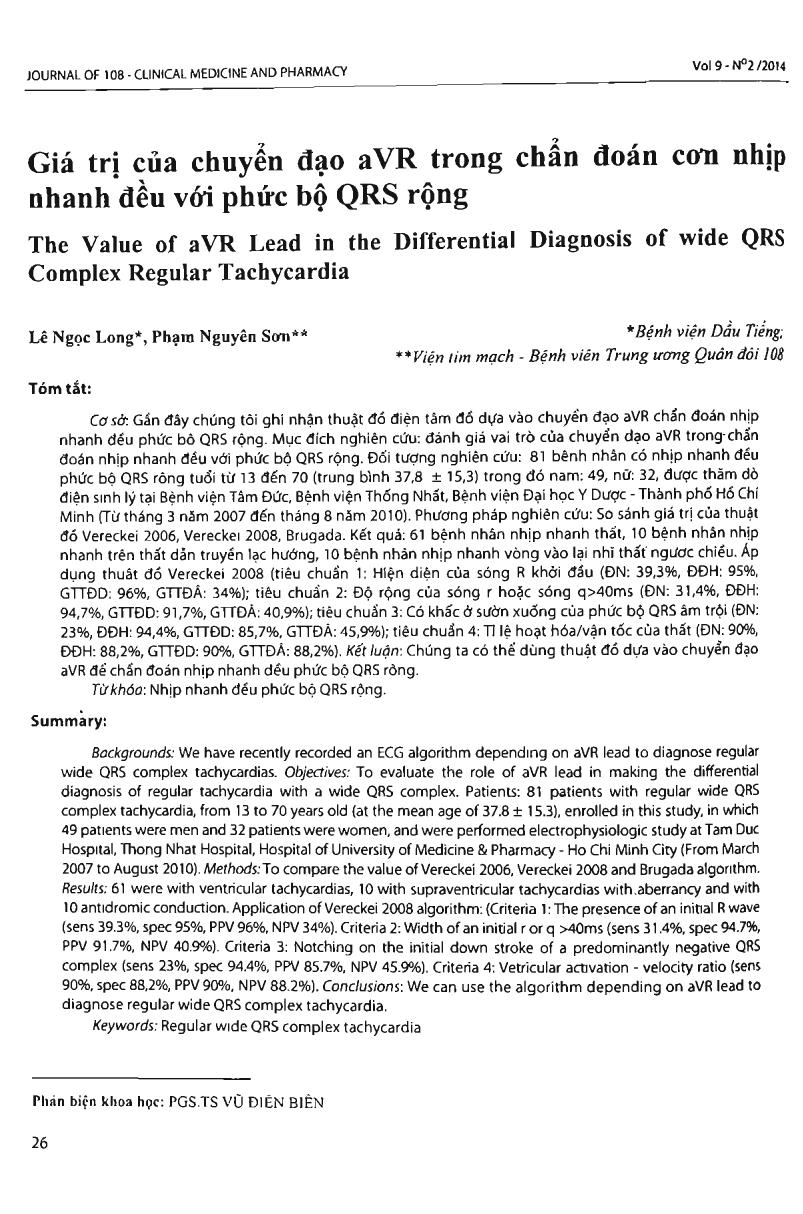
Backgrounds: the authors have recently recorded an ECG algorithm depending on aVR lead to diagnose regular wide QRS complex tachycardias. Objectives: To evaluate the role of aVR lead in making the differential diagnosis of regular tachycardia with a wide QRS complex. Patients: 81 patients with regular wide QRS complex tachycardia, from 13 to 70 years old (at the mean age of 37.8 +/- 15.3), enrolled in this study, in which 49 patients were men and 32 patients were women, and were performed electrophysiologic study at Tam Duc Hospital, Thong Nhat Hospital, Hospital of University of Medicine and Pharmacy - Ho Chi Minh city (From March 2007 to August 2010). Methods: To compare the value of Vereckei 2006, Vereckei 2008 and Brugada algorithm. Results: 61 were with ventricular tachycardias, 10 with supraventricular tachycardias with.aberrancy and with 10 antidromic conduction. Application of Vereckei 2008 algorithm: (Criteria 1: The presence of an initial R wave (sens 39.3 percent, spec 95 percent, PPV 96 percent, NPV 34 percent). Criteria 2: Width of an initial r or q 40ms (sens 31.4 percent, spec 94.7 percent, PPV 91.7 percent, NPV 40.9 percent). Criteria 3: Notching on the initial down stroke of a predominantly negative QRS complex (sens 23 percent, spec 94.4 percent, PPV 85.7 percent, NPV 45.9 percent). Criteria 4: Vetricular activation - velocity ratio (sens 90 percent, spec 88,2 percent, PPV 90 percent, NPV 88.2 percent). Conclusions: the authors can use the algorithm depending on aVR lead to diagnose regular wide QRS complex tachycardia.
- Đăng nhập để gửi ý kiến
